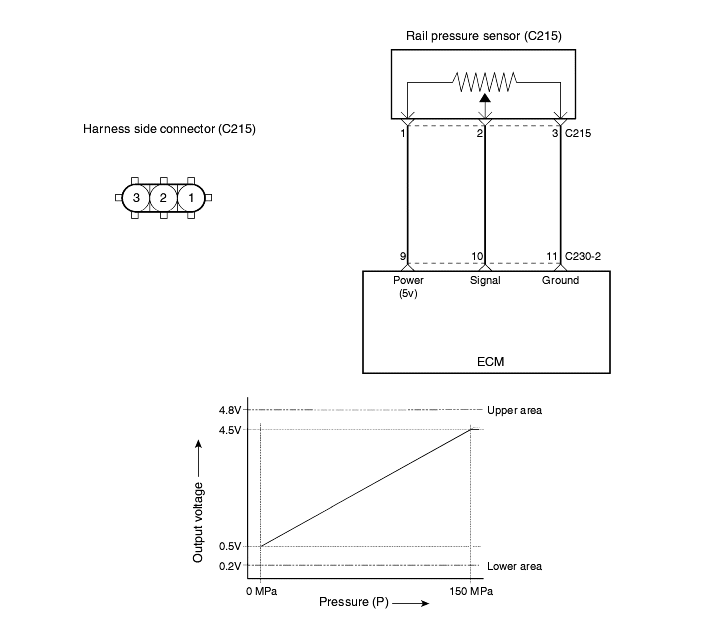
In order to output a voltage signal to the ECM which corresponds to the applied pressure, the rail-pressure sensor must measure the instantaneous pressure in the rail.
The fuel flows to the rail-pressure sensor through an opening in the rail, the end of which is sealed off by the sensor diaphragm. Pressurized fuel reaches the sensor's diaphragm through a blind hole. The sensor element (semiconductor device) for converting the pressure to an electric signal is mounted on this diaphragm. The signal generated by the sensor is inputted to an evaluation circuit which amplifies the measuring signal and sends it to the ECM.


Check item | Data display | Check conditions | Set value | Standard value |
Rail pressure sensor | Rail pressure value | Engine at idle | 220 ~ 300 bar | 260 bar |



Replace the RPS if signal voltage exceeds the set value.
Note the followings.
Always renew the sealing washer (soft iron sealing ring) even if old sensor is re-used.
When removing seal, take care not to damage sealing surface.
When installing RPS, provide the sealing washer with grease if necessary.
Tightening torque is 35 ± 2 Nm.
Replace the faulty fuel rail assembly in case of new model vehicle within a year, or replace the faulty parts of vehicle of which model year is more than a year.